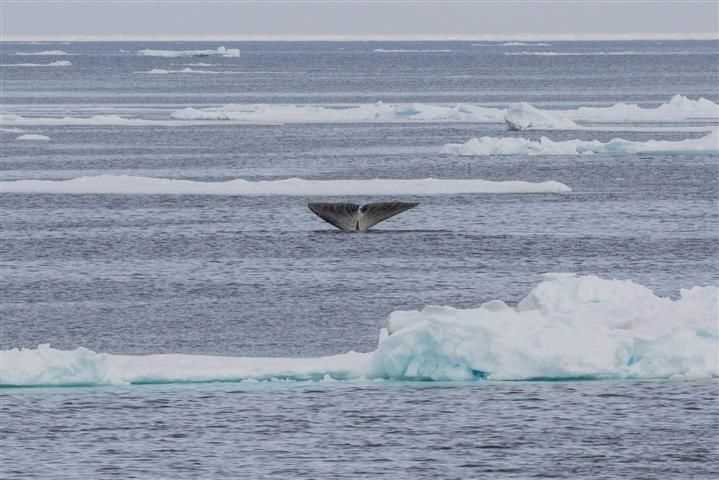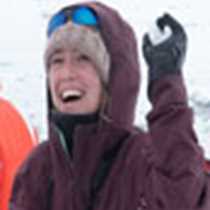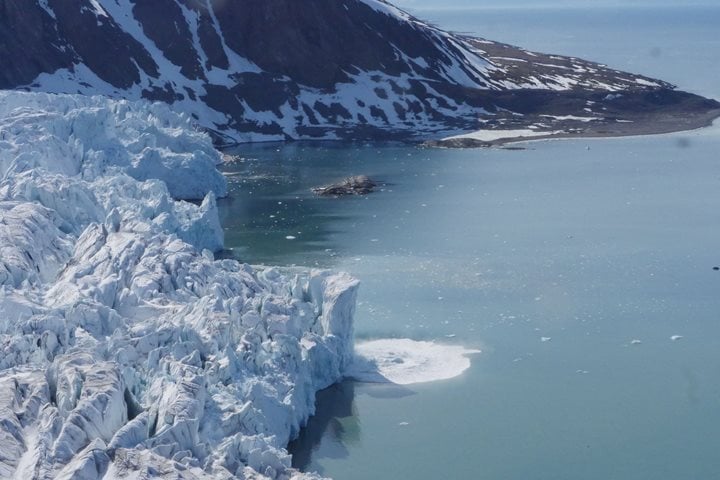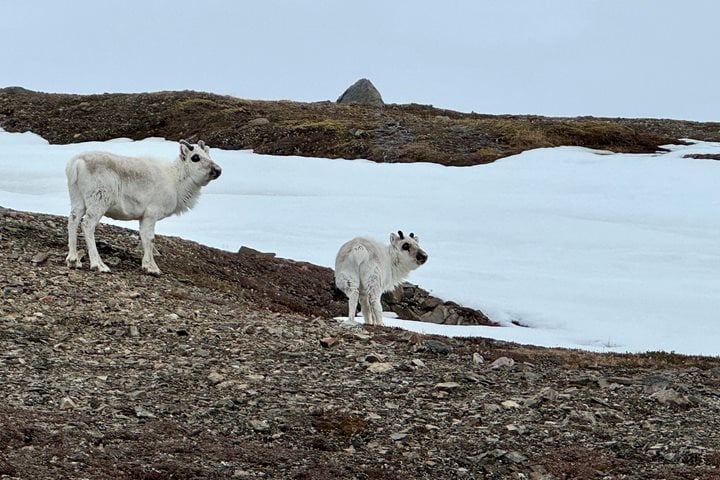Our last full day in the Arctic was full of surprises, beginning with a phenomenally rare pack of morning visitors. As we headed west of Spitsbergen toward the sea ice to investigate wildlife, to our deep disbelief, we spotted whale blows in among the pack ice. And below the blows bobbed huge, rotund, dark backs with no dorsal fin—the unmistakable shape of bowhead whales.
Given that very few members of the naturalist team—even Bud, who has been coming to Svalbard for more than 30 years—has ever seen this species in this area, you can imagine our excitement as we encountered the six whales. Part of an incredibly small population depleted from whaling around Svalbard, it is now thought that the bowhead population here is now on the rise. They are incredible creatures in many amazing ways. They’re are one of the oldest animals ever to have graced our planet. They have been repeatedly shown to reach ages in excess of 200 years, notably through the analysis of amino acids found in their eyes. The thought that these animals we encountered today may have been alive before the commencement of modern, commercial whaling is a deeply sad and humbling thought.
We watched them fluke and skim across the water, using their huge baleen plates—which can reach up to 4 meters in length—to filter plankton from the water column. Mostly, we watched what were clearly social interactions between the whales. These whales sing continuous, elaborate songs, 24 hours a day, that serve complex social function. Sound is their most powerful tool when interacting with each other as well as the icy world around them.
After lunch, we had a landing planned for Hamburgbukta that was called off due to strong winds, so we made our way along the coast to explore Magdalenefjorden—and a good thing we did. Not only did the fjord give us the opportunity to see another walrus haul-out and the calving face of a beautiful glacier, but we were also lucky enough to see a mother polar bear and her two cubs, playing and sleeping on the shore! The cubs were big and healthy and the family proceeded to play, aware of our presence but unconcerned. At moments, mum would lie down and place her head on her paws, as if preparing to go to sleep, at which point a cub would inevitably come over and nudge her head with theirs—a touching interaction to witness.
After an incredible day, we retired to the lounge for the farewell before a final dinner. But the day’s adventure was not over! After dinner, we spotted a group of fin whales—the second largest animal ever to have lived on our planet. The ship was surrounded by several, all appearing to be feeding around us. The ship slowed to a standstill and a pair of whales traveled over to the ship, then surfaced around the bow as we cheered and stood just meters above them. It was clear, as the whales passed back and forth, that they were keen to discover what we were. As they surfaced, the noise of their blows filled the air and their white, lower-right jaws were clearly visible. Satisfied, the whales headed away. We were left stunned, happy, and sleepy—a wonderful evening to finish off a fantastic trip.







